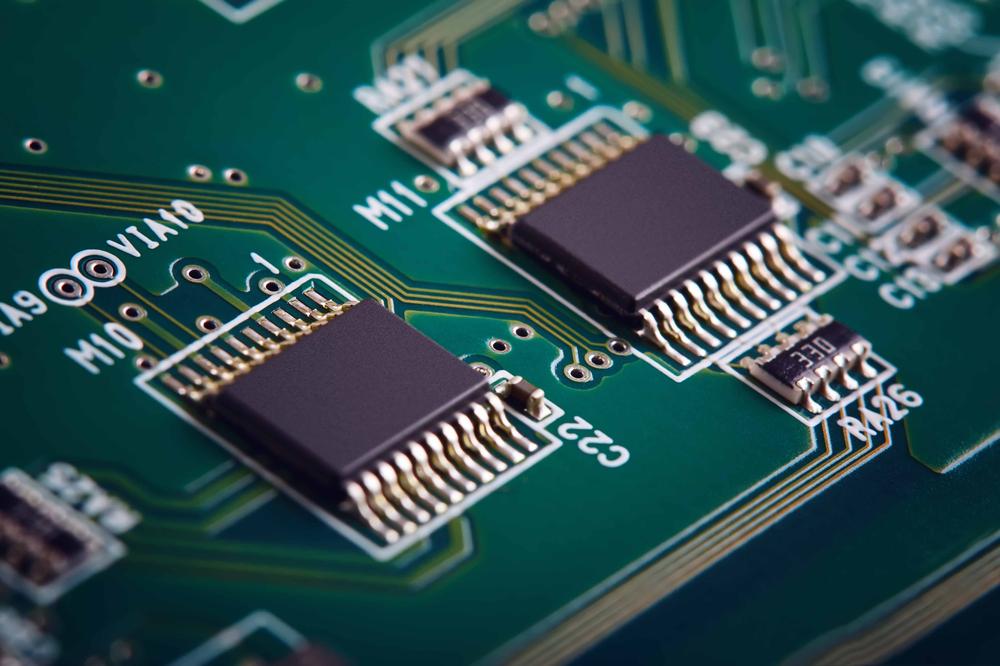
The B2B platform for the best purchasing descision. Identify and compare relevant B2B manufacturers, suppliers and retailers
Close
Filter
Result configuration
Continents
Select continent
Locations
Result types
Company type
Select company type
Industries
Select industry
Company status
Select company status preset
Number of employees
Min.
Max.
Founding year
EGchip
Hong Kong Island, China
D
51-100 Employees
2006
Key takeaway
EGchip is a prominent distributor of various electronic components, including fiber optic receivers. With a focus on recycling and reselling surplus inventory, EGchip addresses material shortages and helps customers manage excess stock.
Reference
Product
Fiber Optics - Receivers - EGchip
TECH OPTICS LIMITED
Tonbridge and Malling, United Kingdom
A
1-10 Employees
1988
Key takeaway
Tech Optics Ltd is a leading supplier of fiber-optic communications products, including customized cable assemblies, and has been serving various markets since 1988.
Reference
Product
TechOptics - FDDI connector
FIBER OPTIC SERVICES (FOS)
India
D
1-10 Employees
1999
Key takeaway
FOS is a leading provider of fiber optic components and equipment, offering techno-commercial services in the field of Photonics and Telecommunication. With over 25 years of experience, FOS is committed to customer support and also provides consultancy for photonics network design and research projects.
Reference
Product
Fiber Optic Services
Looking for more accurate results?
Find the right companies for free by entering your custom query!
25M+ companies
250M+ products
Free to use
Thor Fiber
Torrance, United States
B
51-100 Employees
2009
Key takeaway
The company specializes in CATV and Fiber Transport equipment, offering high-performance optical CATV RF receivers that are rack-mountable and designed for high RF output power. With over two decades of experience, they provide solutions for various applications, making them a trusted source for fiber optic receivers.
Reference
Product
Optical RF Reciever, Catv over Fiber, Antena Fiber optic extender
OPTCORE
Suzhou City, China
D
11-50 Employees
2010
Key takeaway
OPTCORE offers a comprehensive portfolio of optical transceivers, including various form factors and speeds, making them a reliable provider for fiber optic solutions. Their commitment to high quality and affordability, along with a 3-year warranty on all transceivers, underscores their dedication to customer satisfaction in the fiber optic market.
Reference
Core business
Optcore - Global Provider of Transceiver & Cabling Solution
Optcore delivers complete Optical Transceiver and Cabling Solutions, driving high-speed networks. Trusted by 1,400+ global customers. High quality & Affordable.
C-light
Shenzhen, China
D
51-100 Employees
2010
Key takeaway
C-Light offers a range of professional optical transceiver modules, including various fiber optic receivers. Their FTTx system supports multiple data rates and technologies, making it a versatile choice for high-capacity optical communication.
Reference
Core business
Receiver-Professional optical transceiver modules & Solution Designer and Manufacturer | C-Light-
FiberMania Cable Assemblies
Shenzhen, China
D
51-100 Employees
2008
Key takeaway
FiberMania offers a diverse range of fiber optic products, including fiber optic transceivers, which are essential for data transmission in telecommunication systems. Their commitment to quality and customer service positions them as a reliable supplier in the fiber optic and network connectivity market.
Reference
Product
Fiber Optic Transceiver | FiberMania Technology Limited
Emcore
Albuquerque, United States
B
1001-5000 Employees
1984
Key takeaway
EMCORE Corporation is a leading provider of advanced fiber optic technologies, including innovative fiber optic receivers. Their expertise in navigation and inertial sensing applications positions them as key players in the aerospace and defense sectors.
Reference
Product
7840A-Low-Noise-Optical-Receiver-DOCSIS-3 | EMCORE

FEMTO Messtechnik GmbH
Berlin, Germany
A
11-50 Employees
1993
Key takeaway
FEMTO offers advanced photoreceiver solutions, including a newly developed balanced photoreceiver platform, specifically designed for scientific and industrial applications. Their innovative amplifiers and low-noise charge amplifiers enhance the performance of photoreceivers, making them ideal for demanding research environments.
Reference
Product
Photoreceivers - Femto
Firecomms
Cork, Ireland
A
11-50 Employees
2000
Key takeaway
Firecomms is a global leader in fiber optic solutions and optical transceivers, offering a diverse range of high-quality fiber optic components. Their innovative technologies, including Plastic Optic Fiber (POF) Transceivers, are designed to enhance communication networks across various industries.
Reference
Product
Fiber Optic Transceivers, Accessories, Cables & Plugs
Technologies which have been searched by others and may be interesting for you:
A fiber optic receiver is a crucial component in fiber optic communication systems. Its primary function is to convert optical signals transmitted through fiber cables back into electrical signals. This process involves detecting light signals and converting them into an electrical current, which can then be processed by electronic devices. Typically, fiber optic receivers utilize photodetectors, such as photodiodes, to sense the incoming light. The quality and sensitivity of the receiver significantly impact the overall performance and range of the communication system. With advancements in technology, modern fiber optic receivers are designed to handle higher data rates and improve signal integrity, making them essential for high-speed internet and telecommunications networks.
A fiber optic receiver is essential for converting optical signals into electrical signals. When light pulses travel through fiber optic cables, they reach the receiver, which contains a photodetector. This photodetector, often a photodiode, absorbs the incoming light and generates a corresponding electrical current. The received electrical signal can then be amplified and processed to retrieve the original data. The quality of the receiver significantly impacts the clarity and integrity of the transmitted information. Advanced receivers may also include features like error correction and signal conditioning to enhance performance and reliability in data transmission.
The main components of a fiber optic receiver include a photodetector that converts incoming light signals into electrical signals. This component is critical for the functioning of the receiver, as it determines the efficiency and sensitivity of the signal detection. Another essential part is the amplifier , which boosts the electrical signals for further processing. This amplification is crucial for maintaining signal integrity over long distances. Additionally, there is a signal processor that interprets and formats the received signals for use in data communication systems. Together, these components ensure effective transmission and reception of data in fiber optic networks.
1. High Bandwidth
Fiber optic receivers support high bandwidth capabilities, allowing for the transmission of large amounts of data at very high speeds. This capacity is essential in environments requiring quick data transfer, such as data centers and telecommunications.
2. Enhanced Signal Quality
These receivers provide superior signal quality over longer distances compared to traditional copper-based systems. The use of light for data transmission minimizes signal degradation and interference, ensuring clear communication and reliable performance.
3. Increased Security
Fiber optic technology is more secure against eavesdropping and signal tapping. The light signals used in fiber optics are confined within the fiber strands, making it difficult for unauthorized users to intercept data.
4. Durability and Longevity
Fiber optic receivers are generally more robust and resistant to environmental factors like electromagnetic interference and moisture. This durability leads to longer operational life and reduced maintenance costs.
Fiber optic receivers play a crucial role in various applications that require high-speed data transmission and high-quality signal reception.
1. Telecommunications
In the telecommunications industry, fiber optic receivers are essential for converting optical signals into electrical signals, facilitating long-distance communication without signal degradation.
2. Data Centers
Data centers utilize fiber optic receivers to manage and transmit large volumes of data efficiently, ensuring low latency and high bandwidth, which is critical for cloud services and enterprise applications.
3. Video Transmission
In the realm of broadcasting and video production, fiber optic receivers are used to transmit high-definition video signals over long distances, maintaining quality and reducing interference.
4. Industrial Automation
Fiber optic receivers are also employed in industrial automation systems, providing reliable communication between sensors, controllers, and other devices in environments that may be electrically noisy.
5. Military and Aerospace
In military and aerospace applications, these receivers are used for secure communication systems, where resistance to electromagnetic interference and high data integrity are paramount.
Some interesting numbers and facts about your company results for Fiber Optic Receiver
| Country with most fitting companies | United States |
| Amount of fitting manufacturers | 4477 |
| Amount of suitable service providers | 2844 |
| Average amount of employees | 51-100 |
| Oldest suiting company | 1984 |
| Youngest suiting company | 2010 |
20%
40%
60%
80%
Some interesting questions that has been asked about the results you have just received for Fiber Optic Receiver
What are related technologies to Fiber Optic Receiver?
Based on our calculations related technologies to Fiber Optic Receiver are Magnets, Printed Electronics, Industrial Amplifiers, Electronic Transducers, Electronic Oscillators
Which industries are mostly working on Fiber Optic Receiver?
The most represented industries which are working in Fiber Optic Receiver are Telecommunications, Electronics and Electrical engineering, Other, IT, Software and Services, Semiconductor
How does ensun find these Fiber Optic Receiver Suppliers?
ensun uses an advanced search and ranking system capable of sifting through millions of companies and hundreds of millions of products and services to identify suitable matches. This is achieved by leveraging cutting-edge technologies, including Artificial Intelligence.